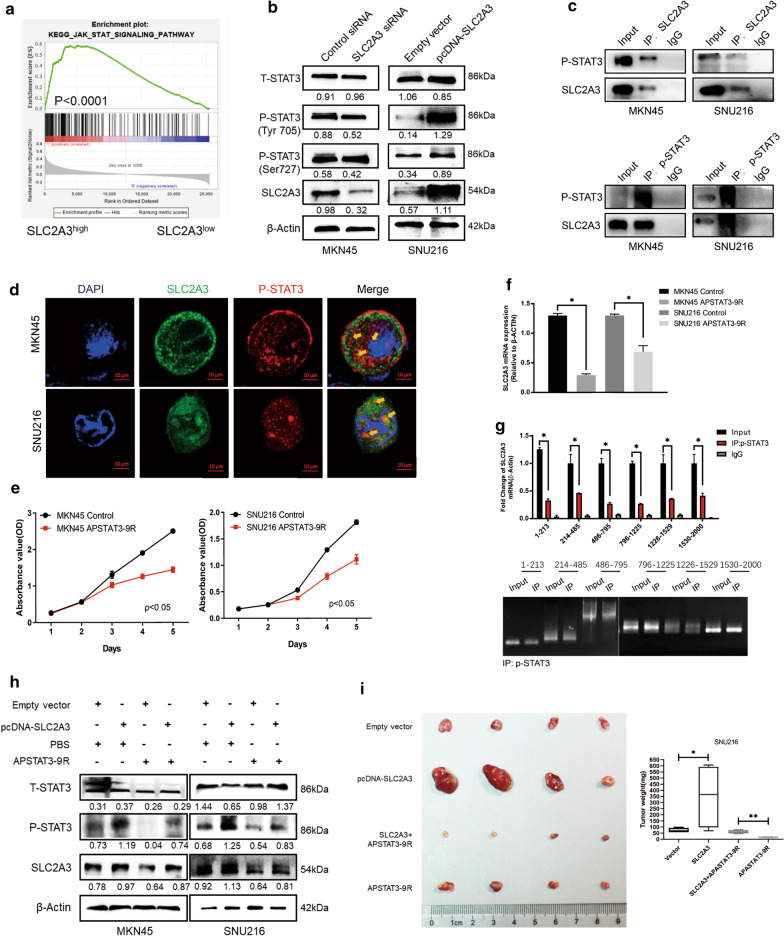Fig. 4.
The SLC2A3-STAT3-SLC2A3 feedback loop accelerates GC progression. a Gene-set enrichment analysis (GSEA) of the protein profiles between SLC2A3high and SLC2A3low groups in the database. b Expression of STAT3 signaling pathway related proteins detected in MKN45 and SNU216 cells by western blot after transfection with siSLC2A3 or SLC2A3 overexpression plasmid. c The interaction between SLC2A3 and p-STAT3 was determined by co-immunoprecipitation analysis. d Co-localization of SLC2A3 (green) and p-STAT3 (red) were assessed by immunofluorescence staining. Merged images represent overlays of SLC2A3, p-STAT3, and nuclear staining by DAPI (blue). e CCK8 assays were conducted to evaluate changes in proliferation ability by APSTAT3-9R stimulation. f Changes in mRNA levels were detected by RT-PCR after APSTAT3-9R stimulation. g ChIP-qPCR and PCR analysis of β-catenin with SLC2A3 and STAT3 promoter regions. h Changes in the expression o of SLC2A3, STAT3, and p-STAT3 protein in SLC2A3 overexpressing and SLC2A3 knockdown cells with or without APSTAT3-9R stimulation. i Subcutaneous xenograft tumor formation with SNU216 cells (Control-LV vs. SLC2A3-LV), followed by treatment with intraperitoneal injection of PBS or APSTAT3-9R (5 mg/kg). Statistical results are shown as mean ± SD, *ρ < .05, **ρ < .001, based on two-way ANOVA or Student’s t-test

